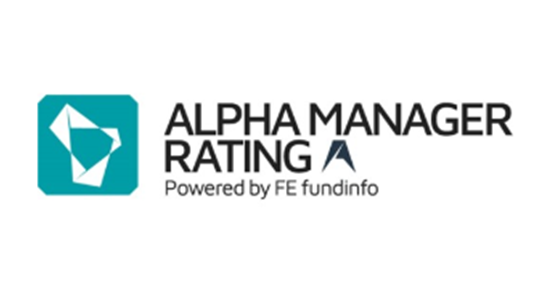
What are the current challenges of fund data management and distribution?
The growth of data has been exponential in fund management and distribution, particularly in the last 5 years as regulatory changes have driven increased requirements and scrutiny.
Other factors, such as the rapid growth in interest around ESG, sustainability and regulation created to support that, have contributed to further data growth through the introduction of new and heightened regulatory reporting requirements.
In essence, Fund Managers now have to create, manage and distribute more data and documents than ever before; in 2022 we processed over 700,000 data points for our clients on a monthly basis. We also recorded the addition of 656 new regulatory data points, out of which, 595 fields were borne out of the new European ESG Template (EET). This template, created by FinDatEx, facilitates the exchange of ESG-related disclosures now required to fulfil an asset manager`s European Sustainable Finance Disclosure Regulation (SFDR) obligations.
Additionally, the ecosystem of fund distribution and regulatory compliance is highly diverse and requires data and documents distributed to a number of organisations in different formats, to specific dates. This makes fund registration, sales and the closure of funds a constant and rather difficult juggling act.
What are the risks arising from inaccurate data distribution?
You might be familiar with scenarios such as your Sales team having to clarify multiple queries, often sent to them via email, around fund charge discrepancies between a terminal and a factsheet. Data vendors and distributors - another inherent element in the data ecosystem - obtain their data from multiple, often disconnected, sources which show up as inconsistencies in data published on their respective platforms.
A good example of this is the recent transition to PRIIPs KID production which really demonstrated the complexity of managing large quantities of data and documents necessary to comply with regulatory requirements. For those who weren’t able to translate the new documents in appropriate language versions, it quite frankly meant their funds would not be available for sale in certain jurisdictions.
A robust data management and distribution technology infrastructure is critical to the success of fund manufacture and distribution. There is simply too much data to process and send out in specific formats and templates to do everything in house. The risk of distributing inaccurate or untimely data is far too great, and can lead to reputational damage at best and, over time, impact sales and might even result in a regulatory fine.
Data management and distribution specialists like FE fundinfo have the capabilities and expertise to fill this gap for asset managers.
In 2022, FE fundinfo recorded the addition of 656 new regulatory data points, out of which, 595 fields were borne out of the new European ESG Template (EET)."
What is Loopback and how does it make a difference?
Loopback is a service within the full suite of Connected Services available through our Fund Information Hub – think of it as a control panel for all your fund data management and document applications.
Loopback constitutes data quality checks run for our dissemination clients, which we have been providing for the past 15 years. We check fund data held and displayed by data vendors, against our meticulously verified Golden Source fund database, as our benchmark. Any data discrepancies are identified and we work with the platform or vendor to ensure erroneous data points are corrected until complete resolution, without any action required from our clients. As an example, we raised and resolved around 11,000 Loopback data queries every month in 2022.
We believe this is one of our key characteristics setting us apart from our competitors. It also certainly helps that for many years we have built and held sound relationships with locally and internationally renowned major media and fund data vendors.
For clarity, whilst only a set number of data points are available to run Loopback on (this is determined by the vendors), our system allows for new data point checks and this function is ready to be switched on once a vendor enables it. Historically, this functionality has proven useful.
So what’s new with the Loopback service and what’s driven these developments?
Previously, Loopback was a capability providing limited or no visibility or insight behind the systems and people. Our clients didn’t have access to the full scope of reporting.
The technology supporting Loopback ensures data points available for checking, as specified by the vendor, are verified, and gives clients access to a dashboard on the Fund Information Hub Portal, allowing them to view data discrepancies more easily and quickly – what they are and where they are appearing. Also, the Application Programming Interface (API) in the background allows for more frequent checks of more data points than ever before, making the whole process much more efficient and powerful.
We have now developed an online platform, the Fund Information Hub Portal, which constitutes a window to this and other, interconnected data and fund lifecycle management capabilities. Developments, such as this one, have been driven directly from our clients who are seeking a holistic data management ecosystem.
Whilst, typically, solutions in the market tend to be disconnected and outdated, creating data siloes, duplication of work effort, and exposure to added risks, the entirely cloud-based Fund Information Hub portal is the answer to these issues. Its underlying technology, including but not limited to, open API access and event-driven architecture, powering a flexible dashboard, leverages modern technology, whilst adjusting to each of our clients’ individual needs.
Last but not least, the technology behind it enables quicker data reconciliation which aims to reduce the time taken to fix anomalies.
Whilst, typically, solutions in the market tend to be disconnected and outdated, creating data siloes, duplication of work effort, and exposure to added risks, entirely cloud-based, the Fund Information Hub Portal is the answer to these issues."
Loopback sounds like a service built on a complex IT infrastructure. Is it equally complicated to implement for a client?
Loopback does not require a lengthy or complicated onboarding process as it leverages FE fundinfo’s existing fund database (coverage) and dissemination network. Additionally, Loopback is available via an easy to use interactive user interface which allows single sign-on, for quicker access and activation.
Are there any specific system requirements for Loopback implementation?
The Loopback service is available within the Fund Information Hub portal so as long as the user has an internet browser, they can access the Loopback dashboard. No specific system requirements are needed.
The Loopback service is currently available to our static and/or dynamic data dissemination service clients who use us and our unparalleled distribution network to disseminate their fund information to their points of sale.
How does FE fundinfo Loopback fit into its dissemination service? Why are they interconnected?
Loopback is the final step in our meticulous quality management process that begins at the point of data ingestion. It provides confirmation that the Golden Source data that we maintain has been sent out and consumed by the end point, accurately. One might’ve thought that it is beyond our control or even not our concern once the data leaves our doors. It’s quite the contrary. Our acute understanding of fund data management and the power of distribution urged us to extend our capabilities to ensure the integrity of distributed fund information. Hundreds of thousands of people rely on our data every day to make investment decisions and Loopback is a key development in how we intend to continue to deliver fund data that people can trust.





